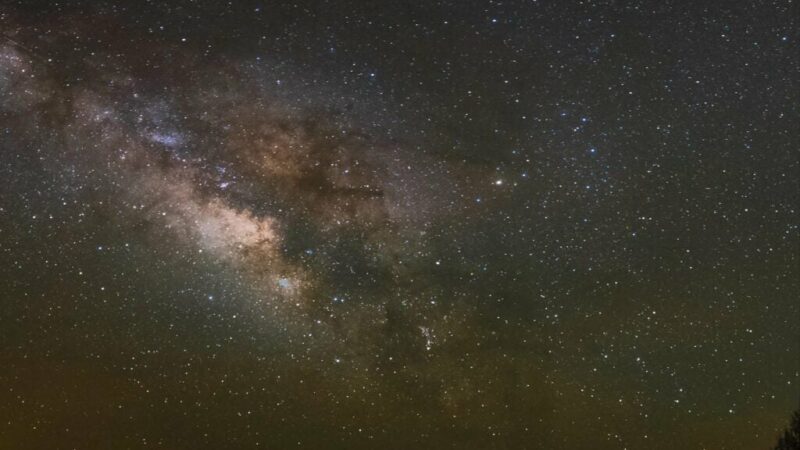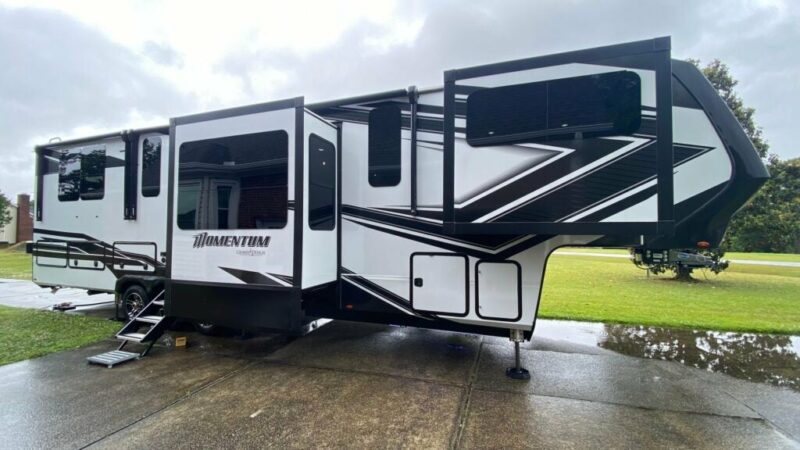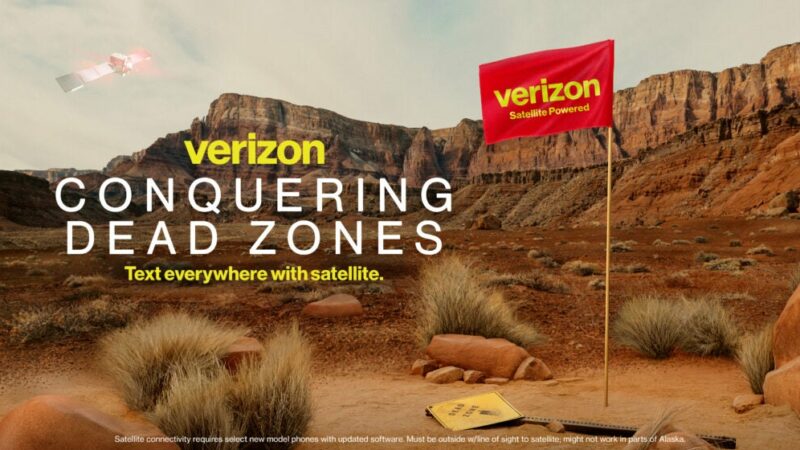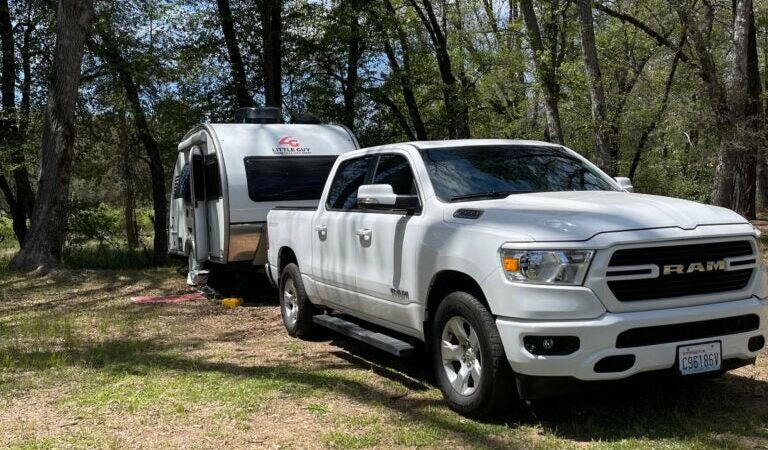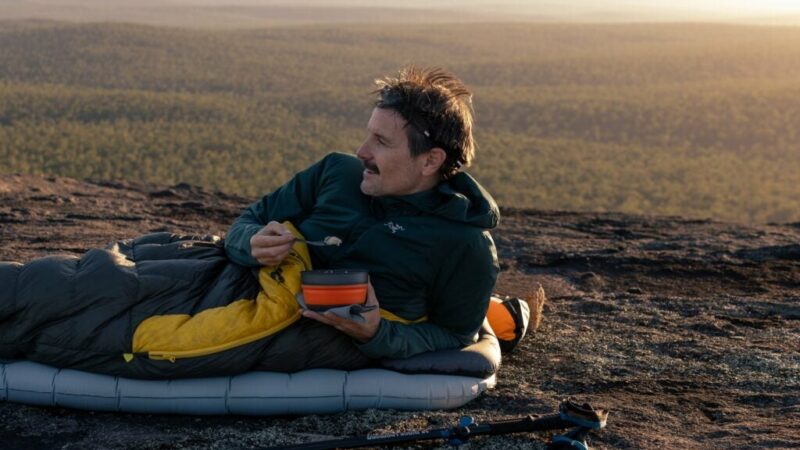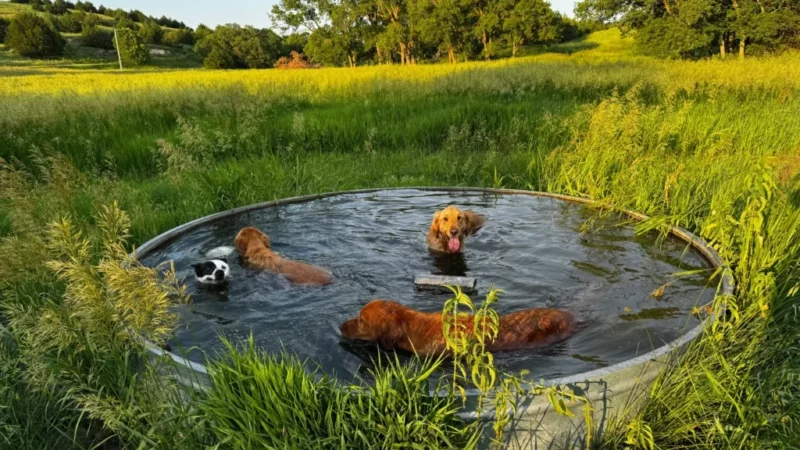Boondocking: The Complete Guide to Free Camping (Almost) Anywhere
Boondocking is more than a funny word: it’s a totally rad way to hit the road! Essentially, “boondocking” is when you utilize free camping without amenities or hookups. The term is most popular in the RV and Camper Van community.
For those who always want to be able to find a campground, we built The Dyrt PRO, which is an annual $35.99 membership that gives you PRO Camping Discounts at hundreds of campgrounds, PRO Gear Discounts, PRO In-App Campground Search even when you lose service, and PRO In-App Downloadable maps. Buy a year of PRO here for just $35.99 if you always want to be able to find an established campground from your vehicle.
For those who want to forgo the campground, boondocking is a way to keep camping cheap and easy. No hookups, no site assignments, probably no neighbors, no problem. For last-minute camping, you can use The Dyrt PRO‘s Offline Maps and Map Layers to find free camping near you. These features will show you public lands where you can camp for free whether or not you have service or wifi!
You can’t just park anywhere and call it boondocking, though. It takes a little know-how and practice before you really get the most of our boondocking.
Boondocking: The Complete Guide to Free Camping (Almost) Anywhere
Every day, campers and travelers choose to escape the crowds of campgrounds for some off-grid exploring. There’s a wide range of camping available under the term “Boondocking.” It can range from setting up camp in the backcountry, to parking at a Walmart.
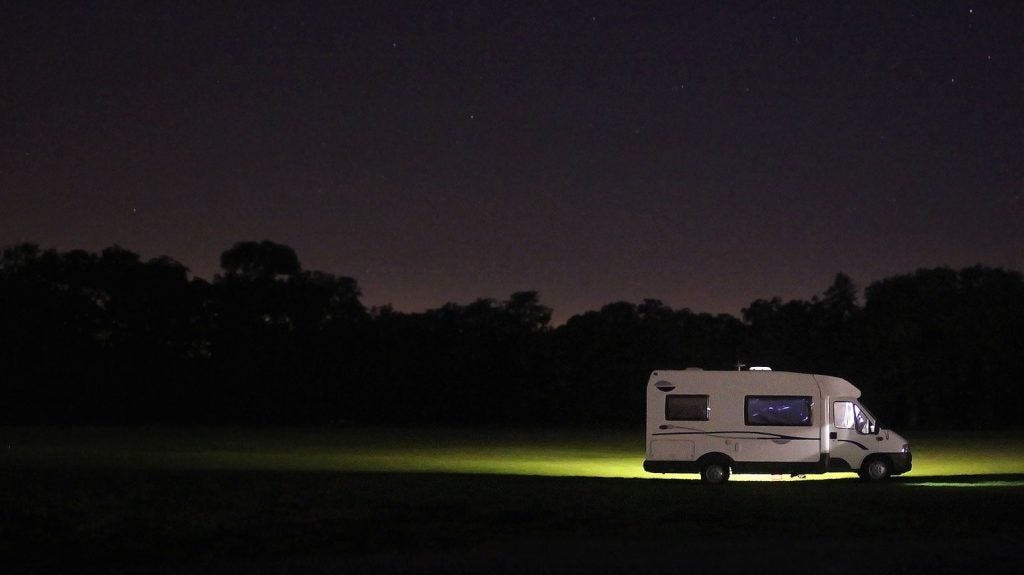
So Wait, What is Boondocking?
In certain respects, boondocking is a simpler form of camping. You free yourself from the reservation process and fees but lose the luxury of a developed campground.
Boondocking is also a handy way to just park and sleep. If you are on a tight schedule and just need a spot to crash for the night, parking in a free lot overnight is a handy way to save you time and money.
Depending on why and how you’re looking to boondock, there are a variety of options for free and cheap camping.
Boondocking is a general camping term but is more common in the RV, van life, and Overlanding communities as they tend to have the supplies and storage to boondock properly. Anyone can boondock whether they are car camping or boondocking in a Class A RV. If you plan on boondocking often, think about investing in external batteries that are charged, a composting toilet, a freshwater tank, and solar panels.
How to Boondock Safely and Responsibly
It’s normal to feel a little hesitant when boondocking, especially when you start. There’s a variety of factors to consider when deciding if a location is safe for boondocking.
Choose a Spot Where Overnight Parking is Allowed
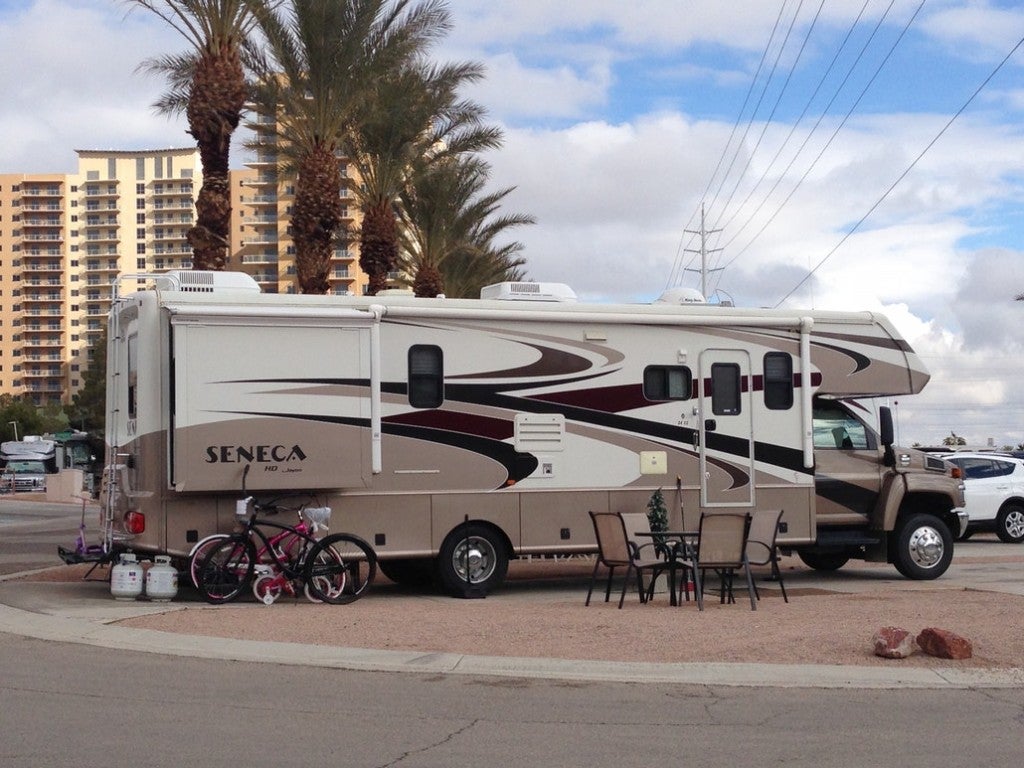
There are a ton of different locations where you are legally allowed to stay overnight. If you’re out in the wilderness, finding a spot to safely boondock is simply picking somewhere remote like BLM land. If you’re in town and need to find free camping quickly, here’s some other popular options:
Walmart Parking Lots
Those looking for Boondocking can stay up to 24 hours at a time in any Walmart parking lot. Boondocking here allows you to stock up on supplies while parking for free!
You’re highly visible and most parking lots are monitored by security. Walmarts are tightening their policies around boondocking, however, so check with the specific location before assuming it’s allowed. There’s actually an app that will help you find a Walmart where boondocking is allowed!
Truck Stops/Rest Areas
Many truck stops and rest areas are totally fine with RVers and Van campers staying overnight. Be sure to let someone know where you’re at though as there is usually very little supervision here. You’ll be close to a restroom and right off the road. Traffic can be noisy, but some rest areas in more rural locations can feel pretty similar to campgrounds!
Visitors Centers
Visitor centers often remain unoccupied during nighttime hours and may even have access to running water and bathrooms. Always check with the visitor center you plan to stay at before committing to boondocking there.
Trail Heads
Lots of trails are used for overnight backpacking trips. As a result, it’s not uncommon to see cars parked at trailheads overnight.
Hotels/Motels
Boondocking in a hotel/motel parking lot is always going to be a gamble. Many major hotels won’t mind assuming their parking lot is already pretty empty. However if full, it might be best to keep looking as you don’t want to risk being towed.
National Forests
Boondocking doesn’t have to mean parking in a questionable parking lot. Parking off of forest service roads is a great way to boondock in nature. More on this, below!
Other Parking Lots for Boondocking
It’s not uncommon to see several RVs parked at your local big box store during the warmer months. Many of these big box stores, like Walmart, Cabela’s and even Cracker Barrel, offer free overnight RV parking. Depending on the state, you may also park overnight at rest areas and visitors canters along the highways.
Availability and ability to stay overnight varies largely on the store’s management. Here’s some popular overnight parking lots:
- Walmart
- Cabellas
- Dennys
- IHOP
- Holiday Inn
- Marriot Inn
- Target
- Winco/Safeway/24 Hour Grocery Stores
- QFC
Prepare your Boondocking Essentials
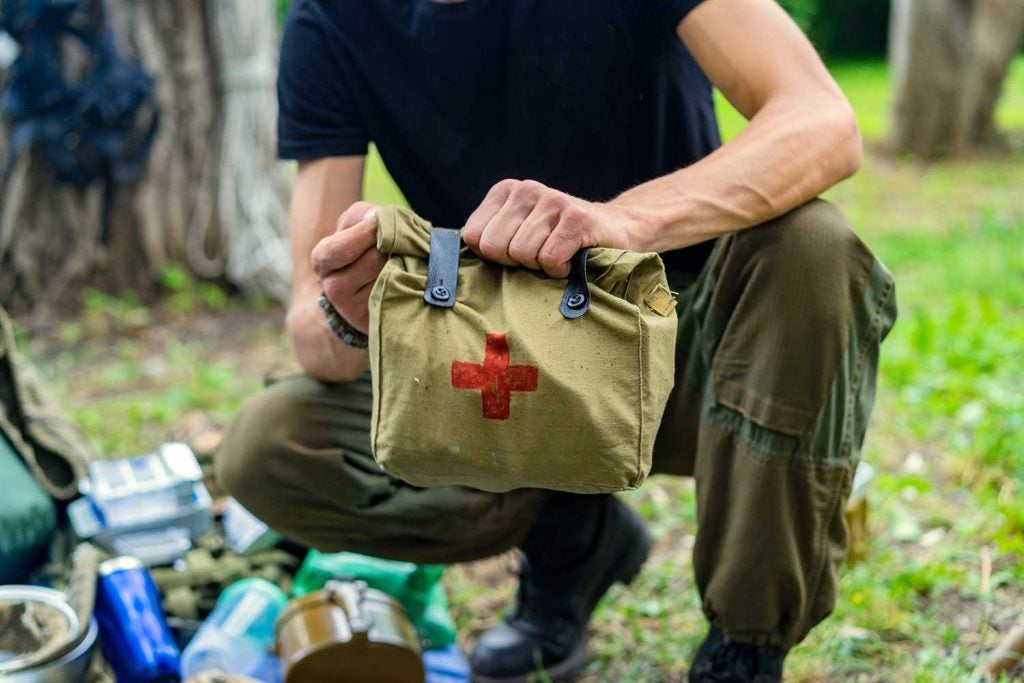
Image from The Dyrt camper David G.
When boondocking you need to ask yourself: do I have the bare essentials to be comfortable overnight? Do I have water, food, and warmth?
Want an adventure of your own? Find free camping near you
Did you know that almost all states in the US have free camping?
Although, some of it is not-so-great and can be hard to find.
There is an easier way:
- Hand-picked free campsites
- Pre-saved to your phone
- The best in all 50 states
It’s the only hand-picked list of 5,000 free camping locations that you will find anywhere.
It comes with a bunch of other features like last-minute camping texts, offline maps, etc.
You can check it out for free today by starting a free 7-day trial. After the 7-day trial, the membership is just $35.99 for a full year of access — well worth it if you camp more than 2 times per year.
If you’re boondocking in a big box store parking lot, you can probably go buy anything you’re missing. But if you’re parking on a secluded forest road, you’re going to need to bring supplies. It’s important to plan out the length of your trip as well to ensure you don’t run out of supplies.
How to find Boondocking in National Forests
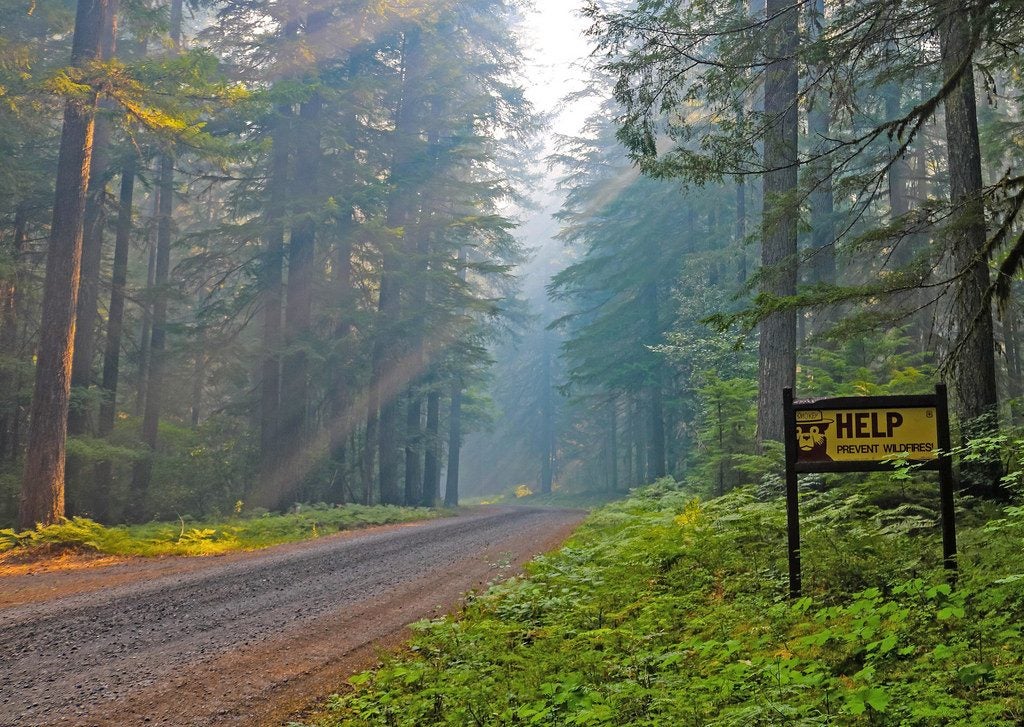
Many national forests and Bureau of Land Management (BLM) lands across the United States offer primitive campsites with no amenities. Typically, you can camp anywhere in a national forest, as long as there is no signage noting otherwise. This makes boondocking a great option for RVers looking to visit the various National Parks. Follow forest access roads to find spots where you can park and “camp” for free.
If you have a big RV, some forest access roads might be difficult to access. They’re often narrow and unpaved. Check with a local ranger station on where you might be able to park for the night.
The USDA provides guidelines on how and where to camp in National Forests and BLM land.
The US Public Lands app is also a great resource for finding public lands with free campsites. Just be sure to do the research BEFORE venturing deep into the woods, as you’ll likely lose cell coverage.
Find Free Camping in the Backcountry
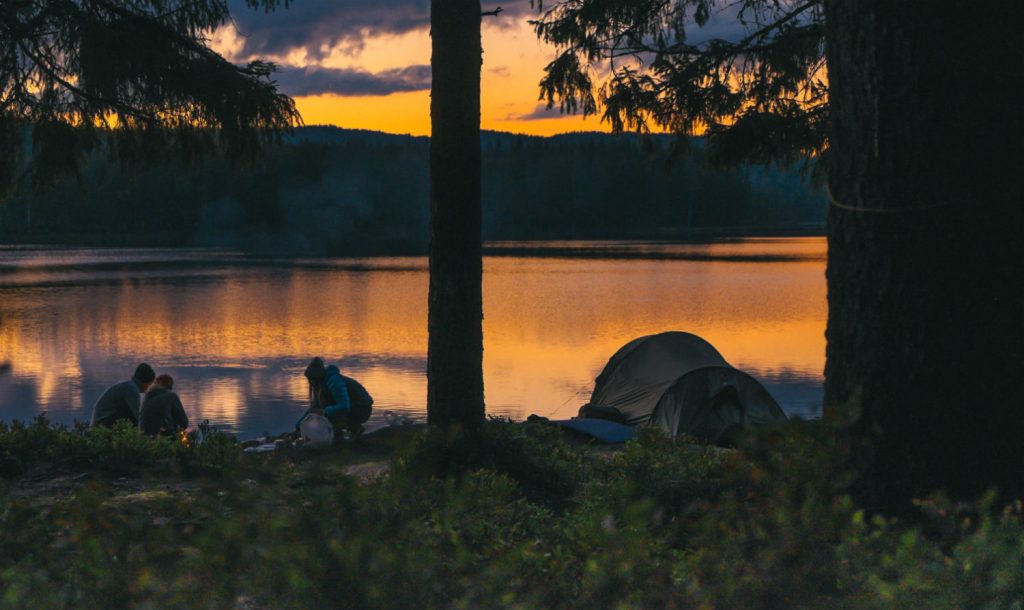
Backcountry camping often refers to backpacking tent camping. You pack in and out all your camping gear to access a remote campsite. If you’re lucky, you might have an outhouse.
RVers can also camp in the backcountry in some instances. Many National Parks and Forests have primitive campgrounds with RV sites available. Best for small RVs and pop-up campers, primitive campgrounds have no hookups and or dump stations. It is always a good idea to check if you need a special backcountry permit.
Did you know there are Free Campgrounds?

Most free campgrounds are dispersed campsites on public land. Many are managed by the state’s Fish and Wildlife Services or the National Forest Service and should be considered primitive.
While it’s typically free, another option for saving money is to “dry camp.” Dry camping refers to staying at a commercial campground with no hookups. You must rely on your own tanks and generators. RV sites with full hookups often cost over twice that of a site without hookups.
Get out and start Boondocking Today!
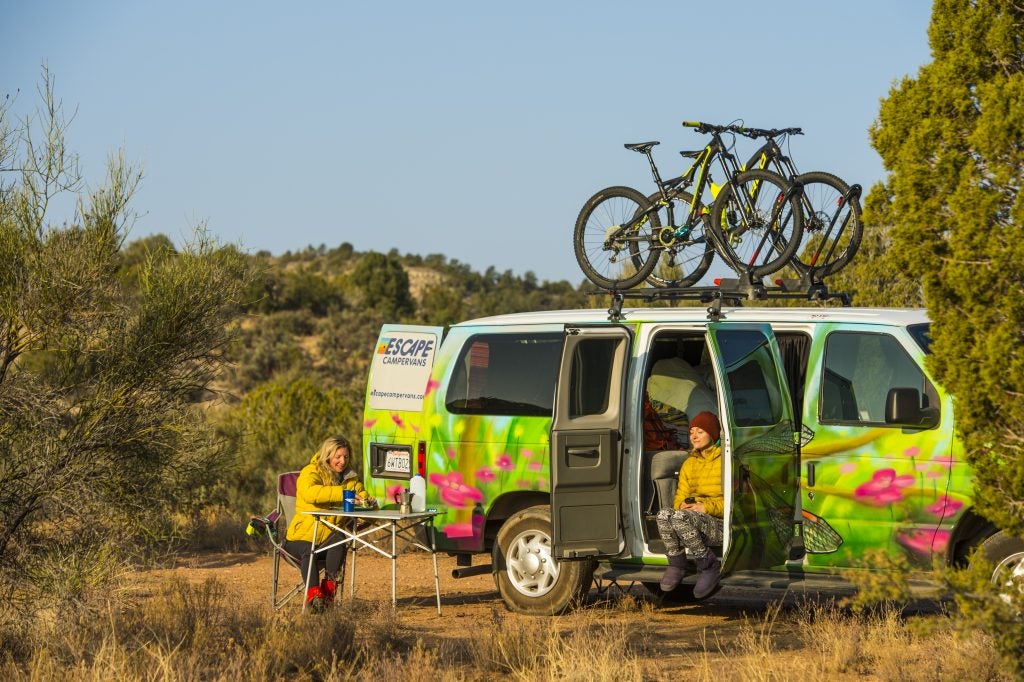
Photo from Escape Campervans ©
If you’re new to the RV or vanlife world, you will undoubtedly go boondocking at some point. Perhaps you already have and didn’t even realize it! Now that you know what boondocking is, it’s time to start planning your free camping trip! We recommend checking out this list of the best places to camp for free in your RV.
Either way, boondocking takes many forms, and you can find a style that works for you. It’s a really effective way to save money, and spend more time camping and doing what you love. Don’t miss out on this great opportunity to find free camping near you.
This article is brought to you by Banner & Oak

Their snapback trucker hats are the perfect addition to your next boondocking camping trip.
Want to learn more about boondocking? Join The RV Campfire or The Vanlife Campfire where you can exchange stories and advice around mobile living and camping.
Related Articles:
- Free Camping
- Lander, Wyoming
- Dispersed Camping
- Cherry Springs State Park
- Moab Camping
- Camper Van Conversion
- Walmart Camping
- Argosy Odyssey’s Boondocking Bootcamp
The post Boondocking: The Complete Guide to Free Camping (Almost) Anywhere appeared first on The Dyrt Magazine.
Source: https://thedyrt.com/magazine/lifestyle/boondocking-guide-free-camping/

